Maintaining our vehicle can be a difficult and time-consuming task. Performing routine car maintenance goes beyond simply cleaning the vehicle with a high-pressure hose. The brake system is one of several components that must be maintained, but the wheels make the work more complex.
It is not possible to clean the braking system thoroughly if you are talking about a complete overhaul. When it comes to cleaning the rotor or other outer components of the brake system, however, this is definitely possible.
As you have probably seen through research, there aren’t too many papers that discuss how to completely clean brakes without having to remove the wheels from the vehicle. This is due to the fact that you simply cannot.
The brake system in your car is made up of several components, the most important of which are the rotor, the brake pads, and the caliper assembly. Remove the brake system components from their respective assemblies if you wish to clean them all thoroughly.
Cleaning the exterior of your vehicle’s brake system is easy if you follow the instructions provided below.
What's In This Guide?
There are a variety of items available on the auto care market today that make your maintenance task much simpler. Wheel cleaners can be found in your local auto shops, and they can assist you in cleaning out dust and rust from the outer area of your car’s brake disc.
Step 1: Purchase a wheel cleanerWhen purchasing this product, you have a wide variety of options in terms of brand. If I had to give you any advice, it would be to use a product that does not damage the delicate finishes or paint on your wheels. In contrast to acidic solutions, PH-balanced solutions are less likely to damage the paint on your wheels.
In contrast to acidic solutions, PH-balanced solutions are less likely to damage the paint on your wheels.
Spray the brake rotor and caliper assembly with the cleaning solution and let it sit for 2 to 4 minutes. You will see that the color of the area where you sprayed the solution will change as a result of the solution changing color.
Step 3: RinseRinse the solution out with your high-pressure hose and you’re done! Your brakes will appear to be in good condition.
The Long Way to Brake CleaningA pressure hose is not always readily available when the thought of cleaning your brakes occurs to you. In addition, not everyone has access to a pressure hose at all times. If you are looking for an alternative method of cleaning your brakes, the techniques outlined below may be of assistance.

Lift the vehicle safely off the ground with your jack until the tire begins to spin. The goal of elevating the car is to allow you to turn the tire while you are completing the cleaning operation underneath it.
Step 2: Place the drain pan in the desired locationPlace the drain pan under the tire that you are cleaning and let it drain. This pan is where all of the liquids and residue are collected. With this method, you shouldn’t have to rinse the pan more than once.
Step 3: Spray the cleaning solution on the surfaceClean the brake rotor and caliper with the cleaning solution of your choice by spraying it on them. As is always the case, it is better to choose a solution that will not damage the paint on your wheels.
Step 4: Remove the dirt using a brushApply pressure to the rotor and caliper of your brake system with your scrub brush until you are assured that all debris and dust has been eliminated. As you do this, rotate the tire to verify that you have covered all of the necessary regions. It’s possible that you’ll need another brush to get to the deepest sections of the caliper.
As you do this, rotate the tire to verify that you have covered all of the necessary regions. It’s possible that you’ll need another brush to get to the deepest sections of the caliper.
After you’ve had a good time scrubbing away the filth, spritz over the rinse solution to remove any remaining residue. It is possible to use a pump sprayer to apply extra pressure and pour the dirt down into a pan if you believe it did not do the task properly.
Step 6: Excess water should be wiped awayTake out your microfiber towel and use it to wipe away any remaining drips of water from your brake rotor and caliper. It may be necessary to give the tire a few turns to ensure that any trapped water drains out and is captured by the towel before using it.
Step 7: Jack downTake a deep breath and jack down. Lower your vehicle to the ground, keep your jack in place, and get ready to roll.
It is advantageous to use this procedure since it allows you to clean the other portions of your wheel at the same time as you clean your brakes. You can use the same items to clean your wheel arches and tires as you would for your car.
You can use the same items to clean your wheel arches and tires as you would for your car.
Whether we like it or not, dirt and dust collect around our brake system, making it uncomfortable to look at. The changing weather is the most significant determinant in the appearance of dirt and grime in our brakes. When it comes to cleaning the brakes on our automobiles, a standard car wash will not always do the trick.
It is possible that rust could develop on the brake rotor over time, which would make your brakes appear unsightly. And that brings us to the major question: how often should you clean your brakes?
Car repair companies typically recommend that you clean your braking system at least once a year, if not more frequently. Others recommend that you check your brakes when you reach 5,000 to 7,000 miles, which is every four to six months. Once or twice a year is the ideal amount of time. That is correct if we are talking about a complete cleaning that includes removing the wheels and properly cleaning each component of the brake system in question.
The part of the brake that we can see with our naked eyes or the outward area of the brakes, should be cleaned as often as possible to keep it in good working order. Brakes can become soiled in a short period of time. If you’re driving in the rain or on a bumpy route, your brakes can soon become unsightly.
The most effective method of keeping your breaks clean is to begin from the outside. Whenever you notice that your brakes are dirty, reach for your high-pressure hose and spray your brakes with it. It’s possible that it’ll be that simple. In order to avoid more serious problems, it is important to maintain them clean. When washing a car make it a point to inspect them and determine whether or not they require extensive cleaning.
How Much Does it Cost to Have Brakes Cleaned?Cleaning the brakes’ outside surface is something that everyone can perform with a little effort. Sunday afternoons are ideal for dedicating an hour to completing a project like this. Although, you can hire someone to complete the task for you, for a price, if you so choose to do so.
Although, you can hire someone to complete the task for you, for a price, if you so choose to do so.
Cleaning the entire brake system, on the other hand, is time-consuming, and it is better that you get a professional to perform it for you. Due to the fact that you must totally disassemble your brake system and dismount your wheels, this is not a simple procedure.
As a result, hiring a mechanic to complete the task for you may be your best alternative. Because after all, you only need to do this once or twice a year at the very most.
The cost of a brake is approximately $80 to $120 per brake, on average. As a result, you should be prepared to spend at least $500 to receive thorough service. The given value does not even include any optional items such as brake fluid, brake pads, or any other components that may be required to be replaced after the vehicle has been purchased.
It is true that cleaning those brakes is an expensive endeavor. The brakes on your vehicle are among the most important components. Your safety is dependent on the function of your brakes, therefore keeping them in good working order is an important component of your protection.
Your safety is dependent on the function of your brakes, therefore keeping them in good working order is an important component of your protection.
Cleaning the outside of your brakes is a simple process. You could utilize wheel cleaning products in conjunction with a few simple measures to complete the task at hand. As a result, you are free to repeat the process as frequently as you choose.
However, without removing your tires, it is not possible to perform a thorough maintenance cleaning of your brakes. During the procedure, you will need to disassemble your brake system, which you will be unable to perform without removing your tires.
For complete brake cleaning (including all of the components), it is recommended to have a mechanic perform the task for you. The work is difficult to do and necessitates the use of specialized knowledge. It does put a strain on your finances, as you must budget at least $500 for a comprehensive service, not including any additional fees.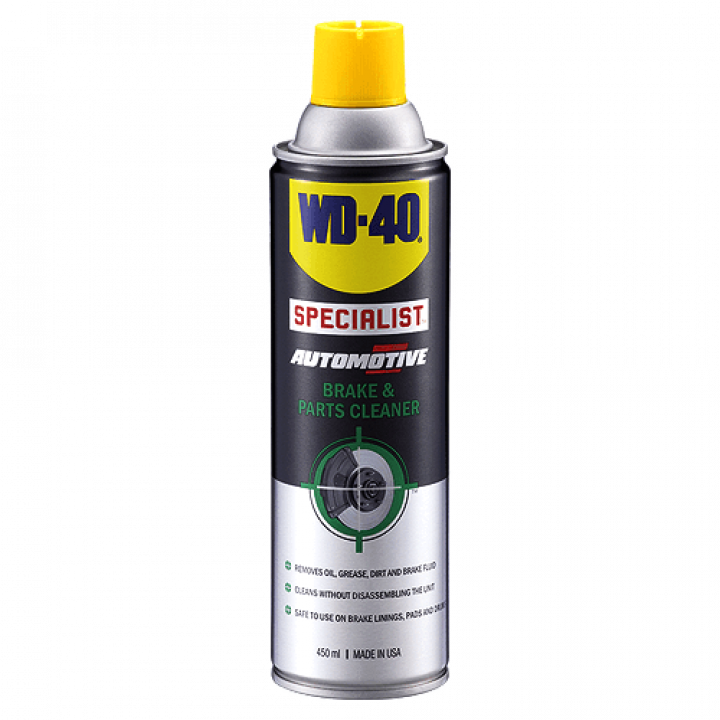
However, it is not necessary to do so on a regular basis. Once or twice a year should be plenty to ensure that your brakes continue to work at their optimum levels.
Your car’s brake system performance depends on how well you clean and invests in its general maintenance.
There are situations where there could be brake soot or dust and if you don’t remove it, problems may arise with your brakes, and ultimately, your driving.
This article aims to show you how to get rid of brake dust – especially, as there are questions on whether it can be done without removing the wheels.
Page Contents
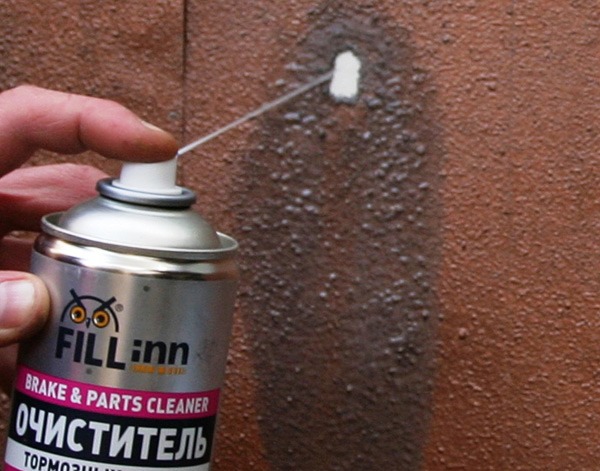 1 Set Your Car on a Flat Surface
1 Set Your Car on a Flat SurfaceAround your car wheels, there are possibly dark residues or soots – they are called brake dust.
These residues are formed as a result of carbon residue, iron particles, and friction around the wheels. The color intensity, however, depends on your brake pad material.
When you discover soot or dark residue around your tires, the next thing you need to do is get a brake dust remover (or brake cleaner). These are solvents capable of removing grease and brake fluid from your wheels and making it as good as new.
These are solvents capable of removing grease and brake fluid from your wheels and making it as good as new.
That being said, below is a list of brake cleaners forms available on the market.
A non-inflammable chlorinated brake cleaner is one of the popular choices to remove all the brake dust around your wheels.
It is a strong and effective option because of the presence of chlorine, which is also a drying agent against crud or brake fluid.
It is non-inflammable, versatile, and doesn’t damage painted surfaces. However, it is quite expensive.
Flammable or chlorinated brake cleaner is another incredible choice, as it comes with other components apart from chlorine (such as isopropyl alcohol), capable of removing dust.
It is an inexpensive choice but highly flammable. For a brake cleaner that contains acetone, it could cause damage to a painted surface.
Alternatively, the 3M High Power Sprayer is a high-performance aerosol brake cleaner. It has excellent luminosity on metal surfaces and often comes in different formulations depending on the manufacturer.
The only demerit of this spray cleaner is that it is also highly flammable.
Yes, you can.
However, cleaning your car’s brake system is more than just the exterior part. You need to disassemble the various brake parts or suspension components, such as the brakes pads, brake rotors, brake discs, brake linings, and the brake caliper units or assembly.
Let’s say you go for any of the 3 brake cleaners, how can you spray brake cleaner without removing your wheels? Find out in this step-by-step guide below .
The first thing you need to do before using a brake cleaner to clean the exterior part of your brakes is to set your car stable and ready for operation.
You should make sure your car is parked on a stable surface and a well-ventilated area so you can perfectly clean brakes.
The next thing to do is to buy the best wheel cleaner and prepare it for the job.
You should make sure the spray nozzle works before cleaning disc rotors and other brake parts.
Now that you know the chlorinated or nonchlorinated brake cleaners work, the next step for you is to spray generously around the brake discs or drums, calipers, and pads.
Although you may not be able to clean disc brakes, brake rotors, and brake shoes properly since the wheels are not off.
For you to have completely clean disc brakes or pads, you need to wipe down the wheels with a small detail brush.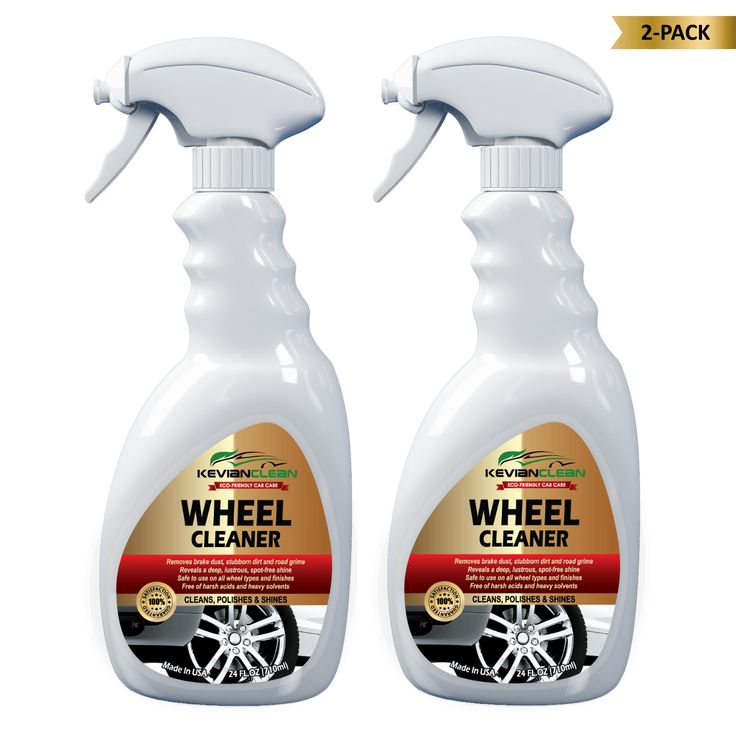 You can also remove excess cleaner with a lint-free cloth.
You can also remove excess cleaner with a lint-free cloth.
Leave the brake parts for a few minutes to air dry before hitting the road again.
Yes, it will eventually indirectly damage rubber tires, especially if it is a nonchlorinated brake cleaner.
With clean brake rotors and other parts that contribute to the braking mechanism, you can drive easily on the road.
However, most brake cleaners and others like Sonax wheel cleaner, carb cleaner have wax surface protectants, making it possible for them to act as a dust remover and agitate crud or residues deposited on the wheels without damaging them.
If you have a brake squeal, that means there is a problem with the brake pads because they often come with a built-in squeaking device.
However, what would make your brake quiet is if you get new brake pads and possibly, change the brake rotors – you can do this without removing the tires.
Yes, it is.
As aforementioned, when you use brake cleaner to clean brake rotors and every other component, you need to clean all residues immediately.
If you don’t, the brake cleaner, especially if it is nonchlorinated, contains chemical compounds that could react with rubber and plastic materials, causing degradation.
Alternatively, you can use a degreasing detergent to get the job done. However, you can only use it in dissolving grease available in small amounts.
If you only clean the exterior part of the brake assembly and leave brake dust on other parts, you may experience issues with your braking mechanism, which is quite dangerous – it could cause a serious accident.
What you should do is disassemble the wheels to expose brake components and use brake cleaner to get rid of the residues.
A brake caliper is one of the features of a disc brake system designed to slow the wheels of a vehicle when driving. It does this by creating decent friction with the brake rotors.
Your brake caliper could develop issues from constant use but you may not quickly notice until you conduct a thorough inspection.
Nevertheless, there are some signs you would notice that definitely tell you that your caliper is bad and needs a replacement. They include:
It depends.
A brake cleaner may not prevent rust buildup but it can remove corrosion from the rotors.
Ideally, the disc rotors tend to corrode as liquid touches them over time.
On the question of whether you can spray brake cleaner without removing tires, the answer is YES.
However, it won’t do you much good to use brake cleaner on the exterior when the interior is still covered in dark residues – this could affect the entire braking mechanism of your vehicle.
You can either go for the listed options above or check out other brake cleaners containing ingredients like isopropyl alcohol to use.
Whatever you decide to go for, ensure to apply properly and use a small brush to reach other significant areas of your brakes.
By Milena Anderson Reading 4 min. Views 41 Posted by

Will Brake Cleaner damage discs?
Brake cleaner is not harmful to discs. However, it can damage the finish if it gets on the wheel spokes or the hub.
However, it can damage the finish if it gets on the wheel spokes or the hub.
Is there acetone for cleaning brakes?
No, brake cleaner is not acetone. Acetone is a type of solvent that is used in many cleaning products.
Is the brake cleaner is isopropyl alcohol?
Yes, isopropyl alcohol is often used in brake cleaners.
Is there water in the brake cleaner?
Brake Cleaner is a solvent-based cleaner designed to clean and degrease surfaces. Although it may contain some water, brake cleaner is primarily made up of chemicals and solvents that are harmful if swallowed or in contact with skin.
Brake cleaner same as throttle body. cleaner?
Brake cleaner is a special type of cleaner designed for the vehicle's brake system. Throttle body cleaner is a generic term for a variety of automotive cleaners designed to clean the entire engine.
Can WD 40 be used instead of carburetor cleaner?
WD 40 is an effective cleaner for many surfaces, but not a carburetor cleaner.
Can starting fluid be used as brake cleaner?
No, starting fluid is not designed to clean brakes. Brake cleaners are specifically designed to remove dirt and debris from the brake system. Starting fluid may contain harmful chemicals that can damage the brake system.
Can carburettor cleaner be used instead of brake cleaner?
Brake Cleaner is an excellent choice for cleaning your bike's brakes. It is effective and safe for all types of braking surfaces.
What is in the brake cleaner?
Brake cleaner usually contains a solvent such as isopropyl alcohol and a degreaser such as ethyl acetate.
Does brake cleaner damage rubber?
There is no single answer to this question as it depends on the particular brake cleaner and the condition of the rubber. Some brake cleaners may cause minor damage to rubber, while others may cause more serious damage. It's always best to test a small amount of cleaner on a piece of rubber before using it on real brake pads.
Some brake cleaners may cause minor damage to rubber, while others may cause more serious damage. It's always best to test a small amount of cleaner on a piece of rubber before using it on real brake pads.
Can an engine degreaser be used to clean the brakes?
You can use an engine degreaser to clean the brakes, but this may not be the best choice. An engine degreaser is designed to dissolve grease and oil that can damage brake pads and discs. In addition, an engine degreaser can also contain harmful chemicals that can damage your car's finish. If you need to clean your brakes, use a mild soap solution instead.
Can degreaser be sprayed on the brakes?
No, the degreaser does not work on the brakes. Is
Wd40 the same as brake cleaner?
WD40 is a general purpose cleaner and degreaser. It is not specifically designed for use as a brake cleaner.
Where should I spray the brake cleaner?
There are several places to spray brake cleaner.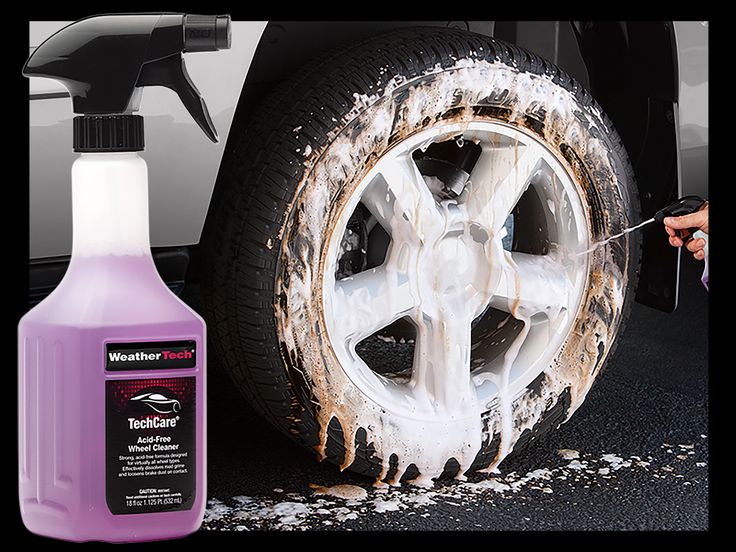 One is the back of the wheel where the brake pads meet. The other is on the calipers if they stick.
One is the back of the wheel where the brake pads meet. The other is on the calipers if they stick.
How to stop brake squealing without removing the wheel?
There are several ways to deal with squealing brakes. One of them is the use of brake pad conditioner. The other is to lubricate the brake system. Third, replace the brake pads or pads.
Autochemistry today decides. Five years ago, the majority dismissed, they say, why? And so everything is fine. Now we understand that the car must be looked after. What's the point of buying new parts when you can cut costs in half just by spending a few minutes of your time once a week. In our country, the most underestimated tool so far is the brake cleaner. Many have probably heard of such a drug in the field of auto chemistry, but this phrase is quickly thrown out of their heads, because no one they know uses or because there is no need to clean the brakes. However, this is a profound misconception. The brake system must be cleaned regularly.
Many have probably heard of such a drug in the field of auto chemistry, but this phrase is quickly thrown out of their heads, because no one they know uses or because there is no need to clean the brakes. However, this is a profound misconception. The brake system must be cleaned regularly.
Brake cleaner contains a lot of alkali, and if the product is correct, it leaves only positive emotions. While the pad rubs against the brake disc, a large amount of micro-chips and dust is formed. In the case of poor material parts of the brake system, this production waste is visible to the naked eye. If the spare parts are of high quality, you may not see dust, but it is still there.
Brake shoe friction material is mainly metal. It is logical that metal chips should not remain between the disc and the pad. The second component of the friction material is phenol-formaldehyde resins, which, under the influence of temperature, and during braking, the temperature is high, traps metal chips between the disc and the pad and prevents it from crumbling.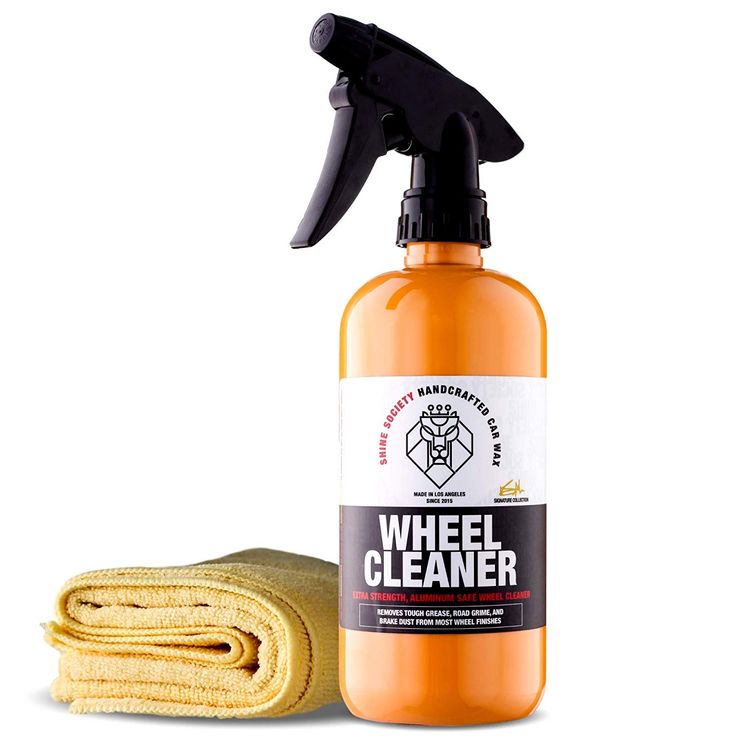 This leads to the fact that chips and dust are unevenly deposited on the disc. Part remains on the caliper itself. Most people think that hard braking causes the disc and pad to clean itself. And this is the main misconception. Braking literally imprints sticky microparticles into the disc. Grooves appear, like on an old vinyl record. As a result, you get quick wear of the disc and pads. The decline in the quality of pads entering the Russian market only contributes to this.
This leads to the fact that chips and dust are unevenly deposited on the disc. Part remains on the caliper itself. Most people think that hard braking causes the disc and pad to clean itself. And this is the main misconception. Braking literally imprints sticky microparticles into the disc. Grooves appear, like on an old vinyl record. As a result, you get quick wear of the disc and pads. The decline in the quality of pads entering the Russian market only contributes to this.
It is not difficult to apply it at all. For more effective cleaning, it is recommended to remove the wheel. Thus, it is possible to process all elements of the brake system and clutch. The composition is usually produced in pressurized cans that create a strong jet. Spray the brake disc cleaner a few centimeters away. The layer of dirt is washed away with a strong jet of the product. After a minute, the product evaporates from a clean surface. In case of heavy soiling after applying the brake cleaner, it is recommended to wipe the surface with a clean, dry cloth and reapply the product. When cleaning brakes, avoid getting the product on plastic and varnished parts.
When cleaning brakes, avoid getting the product on plastic and varnished parts.
Very simple. You can swipe the disc before and after. And you will understand that the oily film is gone. But to be honest, you will understand everything without palpation of the discs. The braking of the car will be much more efficient. Few people think that the braking distance of your car is already far from the factory parameters. Without thinking about it, no one thinks that it can be returned. In case of emergency braking, the braking distance is shorter.
Sadly, the brake cleaner is neglected by car services. Don't they know how to clean the brakes? After all, the tool is able to remove dirt and grease from the elements of the brake system and increase the safety of travel. And the composition can also be used in the repair of the engine and units, but that's not all. Such a preparation perfectly degreases metal surfaces and tools.